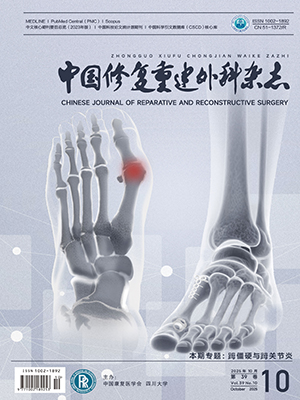| 1. |
|
| 2. |
|
| 3. |
|
| 4. |
|
| 5. |
|
| 6. |
|
| 7. |
|
| 8. |
|
| 9. |
|
| 10. |
Yu H, Xu M, Duan Q, et al. 3D-printed porous tantalum artificial bone scaffolds: fabrication, properties, and applications. Biomed Mater, 2024, 19(4).
|
| 11. |
|
| 12. |
|
| 13. |
|
| 14. |
Kazemi N, Hassanzadeh-Tabrizi SA, Koupaei N, et al. Incorporation of forsterite nanoparticles in a 3D printed polylactic acid/polyvinylpyrrolidone scaffold for bone tissue regeneration applications. Int J Biol Macromol, 2025, 305(Pt 1): 141046.
|
| 15. |
|
| 16. |
|
| 17. |
|
| 18. |
Wang B, Ye X, Chen G, Zhang Y, Zeng Z, Liu C, et al. Fabrication and properties of PLA/beta-TCP scaffolds using liquid crystal display (LCD) photocuring 3D printing for bone tissue engineering. Front Bioeng Biotechnol. 2024;12: 1273541.
|
| 19. |
|
| 20. |
|
| 21. |
|
| 22. |
|
| 23. |
|
| 24. |
|
| 25. |
|
| 26. |
|
| 27. |
|
| 28. |
|
| 29. |
|
| 30. |
|
| 31. |
|
| 32. |
|
| 33. |
|
| 34. |
|
| 35. |
|
| 36. |
|
| 37. |
|
| 38. |
|
| 39. |
|
| 40. |
|
| 41. |
|
| 42. |
|
| 43. |
|
| 44. |
|
| 45. |
|
| 46. |
Hudák R, Schnitzer M, Králová ZO, et al. Additive manufacturing of porous Ti6Al4V alloy: Geometry analysis and mechanical properties testing. Applied Sciences-Basel, 2021, 11(6).
|
| 47. |
|
| 48. |
|
| 49. |
|
| 50. |
|
| 51. |
|
| 52. |
|
| 53. |
|
| 54. |
|
| 55. |
|
| 56. |
|
| 57. |
|
| 58. |
|
| 59. |
|
| 60. |
|
| 61. |
|
| 62. |
|
| 63. |
|
| 64. |
Wiltfang J, Rohnen M, Egberts JH, et al. Man as a living bioreactor: Prefabrication of a custom vascularized bone graft in the gastrocolic omentum. Tissue Engineering Part C: Methods, 2016, 22(8): 740-746.
|
| 65. |
|
| 66. |
|
| 67. |
Finley JM, Acland RD, Wood MB. Revascularized periosteal grafts—a new method to produce functional new bone without bone grafting. Plast Reconstr Surg, 1978, 61(1): 1-6.
|
| 68. |
|
| 69. |
|
| 70. |
|
| 71. |
|
| 72. |
Cai X, Xu Y, Yu K, et al. Clinical application of 3-dimensional printed navigation templates in treating femoral head osteonecrosis with pedicled iliac bone graft. Ann Plast Surg, 2020, 84(5S Suppl 3): S230-S234.
|




